
![]()

| In 1855 American sculptor, Thomas Crawford (1813- 1857), was awarded the commission to design a statue for the top of the new cast-iron dome of the Capitol. From his studio in Rome, the sculptor suggested Freedom Triumphant in War and Peace. Final approval of this crowning piece was required from the Secretary of War, who at the time was Jefferson Davis of Mississippi. While generally pleased with Crawford’s design, one item bothered him. The classically-inspired figure wore a liberty cap, the badge of a freed slave. Davis complained that “its history renders it inappropriate to a people who were born free and would not be enslaved…Why should not armed Liberty wear a helmet?” The liberty cap was replaced by a helmet decorated with Eagle feathers reminiscent of American Indian headdresses. When the plaster model for the bronze statue arrived in 1859 it was significantly larger and heavier than what had been originally specified. Consequently, Walter had to redesign the dome itself to accommodate the larger statue. The final statue was cast in bronze at the Clark Mills foundry just outside Washington. The installation was scheduled for Independence Day, 1863, which would have coincided nicely with the Union victory at Gettysburg, but delays prevented it from being lifted into place until December 2, 1863. | |
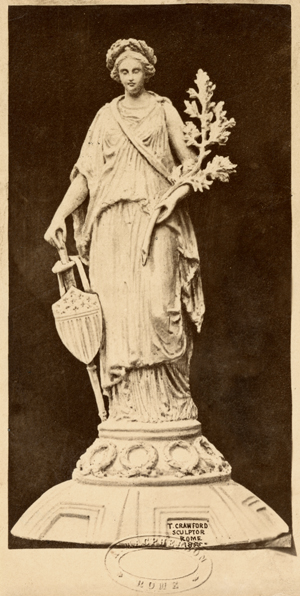 |
Original Proposal for Freedom Triumphant
in War & Peace Thomas Crawford, Sculptor Reproduction of Albumen Print 1855 This proposal was rejected by Secretary of War, Jefferson Davis, who objected to the artist’s placement of a liberty cap, the badge of a freed slave, on the head of Freedom. Walter Collection, The Athenaeum of Philadelphia |
|
|
|
|
Tholos on Dome Thomas U. Walter, Architect Reproduction of Rendering September 1859 When the plaster model of Freedom arrived in Washington four years after its commissioning and two years after the death of its artist, it was 3 feet taller and 3 ½ feet wider than originally specified. As a result Walter had to redesign the dome to accommodate the larger sculpture. The result was a dome that was 3 ½ feet wider at the tholus, but 12 ½ feet shorter than originally planned. Walter Collection, The Athenaeum of Philadelphia |
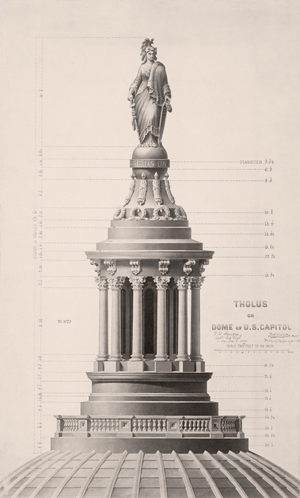 |
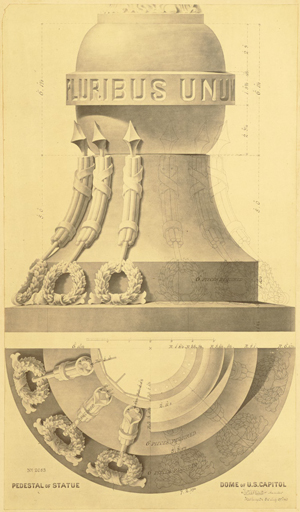 |
Pedestal of Statue, Dome of U. S. Capitol Thomas U. Walter, Architect Reproduction of Rendering July 29, 1859 Walter Collection, The Athenaeum of Philadelphia |
|
|
|
| Plaster Model of Statue of Freedom Salted Paper Print 1856 Documentation photo taken in the sculptor’s studio in Rome Walter Collection, The Athenaeum of Philadelphia |
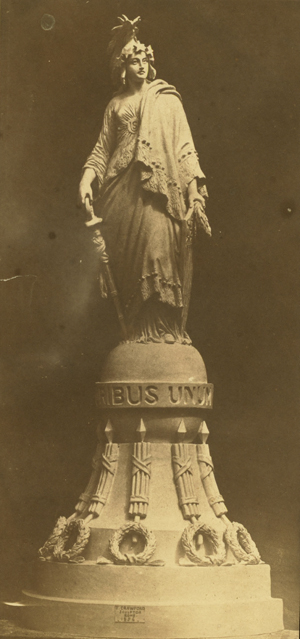 |
|
|
|
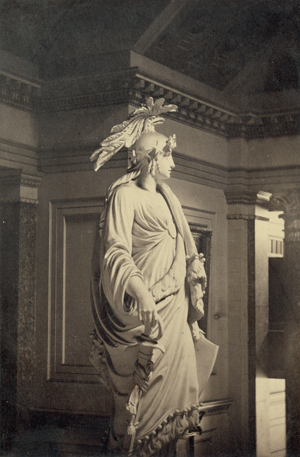 |
Plaster Model of Statue of Freedom Mounted Albumen Photograph c. 1859 Between 1859 and 1863, the plaster model of Crawford’s statue of Freedom was on public display in the abandoned Hall of the House of Representatives, now Statuary Hall. Walter Collection, The Athenaeum of Philadelphia |
|
|
|
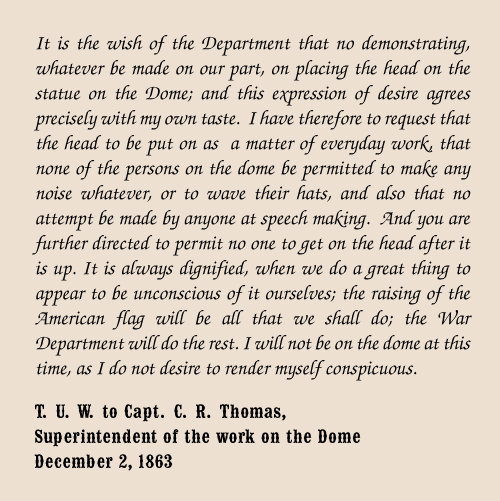 |
|
 |
|
 |
|
Copyright © 2012 The Athenaeum of Philadelphia